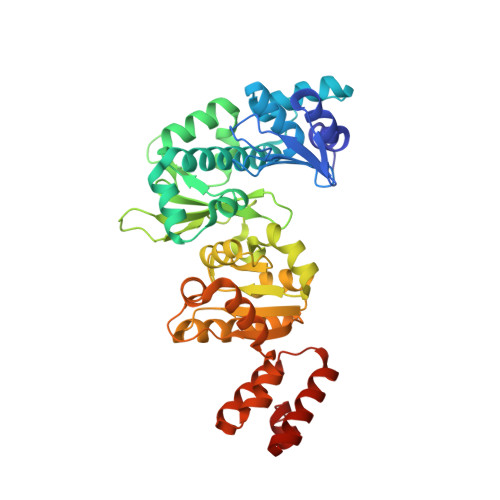Crosstalk between primase subunits can act to regulate primer synthesis in trans.
Corn, J.E., Pease, P.J., Hura, G.L., Berger, J.M.(2005) Mol Cell 20: 391-401
- PubMed: 16285921
- DOI: https://doi.org/10.1016/j.molcel.2005.09.004
- Primary Citation of Related Structures:
2AU3 - PubMed Abstract:
The coordination of primase function within the replisome is an essential but poorly understood feature of lagging strand synthesis. By using crystallography and small-angle X-ray scattering (SAXS), we show that functional elements of bacterial primase transition between two dominant conformations: an extended form that uncouples a regulatory domain from its associated RNA polymerase core and a compact state that sequesters the regulatory region from the site of primer synthesis. FRET studies and priming assays reveal that the regulatory domain of one primase subunit productively associates with nucleic acid that is bound to the polymerase domain of a second protomer in trans. This intersubunit interaction allows primase to select initiation sites on template DNA and implicates the regulatory domain as a "molecular brake" that restricts primer length. Our data suggest that the replisome may cooperatively use multiple primases and this conformational switch to control initiation frequency, processivity, and ultimately, Okazaki fragment synthesis.
- Department of Molecular and Cell Biology, University of California, Berkeley, Berkeley, California 94720, USA.
Organizational Affiliation:

















